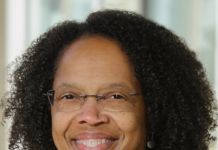 A new study led by scholars at Rice University in Houston, Texas, found that when middle and high school teachers in science, technology, engineering, and mathematics (STEM) pursue continuing professional development, their students benefit.
A new study led by scholars at Rice University in Houston, Texas, found that when middle and high school teachers in science, technology, engineering, and mathematics (STEM) pursue continuing professional development, their students benefit.
STEM education researchers at Rice tracked the progress of mathematics teachers for six years following their participation in a continuing education program for inquiry-based teaching and then looked at the academic paths of the teachers’ former students. The researchers found that students in the teachers’ classes were more likely to pursue a STEM major in college than their peers in other teachers’ classes, and Black female students were nearly twice as likely to do so.
Researchers tracked participants in Rice’s Applied Mathematics Program (AMP!), which offered teachers extra training in inquiry-based learning. They were able to track students who were in eighth grade when their teachers received the added training through their early years of college.
The study showed that in general, students of AMP!-trained teachers were 5.3 percent more likely to pursue STEM majors in college than their peers. Asian students with AMP! teachers were 6 percent more likely to pursue STEM majors. Black students were at 6.6 percent, White students at 5.2 percent, and Hispanic students at 4 percent.
The researchers found Black female students of AMP! teachers were 7.2 percent more likely to major in STEM in college, nearly double the percentage of Black female students of non-AMP! teachers.
“It’s about exploring science and math through real phenomena and asking a lot of questions,” notes senior author Carolyn Nichol, an associate research professor of chemistry and director of Rice’s Office of STEM Engagement. “That emulates what we might do in a lab. An important part is ensuring teachers don’t go into the classroom and just start talking about things in a language that seems foreign to students.”
The full study, “Long-Term Impact of Teacher Professional Development on Black Female Students’ Engagement in STEM,” was published in the Journal of STEM Outreach. It may be accessed here.











